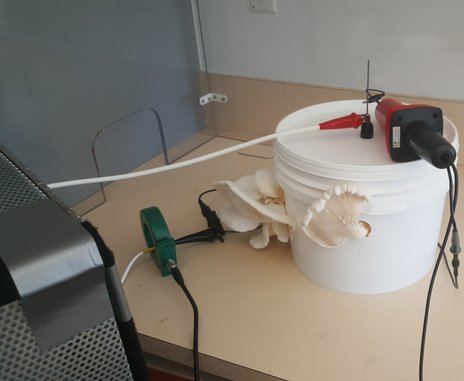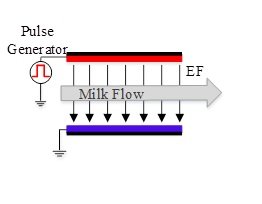Pulsed Power Lab
"Pulsed Power is an emerging and multidisciplinary research field"
Pulsed Power: Technology
When an electrical energy is stored in a system over a long time and is released over a short time, a huge amount of peak power can be delivered to a load. This is known as pulsed power, a powerful pulse with a short pulse width. There are two different types of energies which can create pulsed power such as (a) switching of voltage (electric field) stored in a capacitor and (b) switching of current (magnetic field) stored in an inductor. In this project, our main focus is pulsed voltage.
Bioelectrics and Industrial applications
The effect of intense pulsed electric fields on biological cells has been the topic of research since the late 1950s. It has been shown that cells have a capacitive-resistive model and if too much charge gathers at the cell membrane, the electric field breaks the membrane down, creating permeable pores. Specific trains of high voltage pulses can generate reversible or irreversible pores on the membrane, dependent on the electrical characteristics of the pulse and on the target organism. This process can be applied to contaminated water to kill bacteria. Studies have indicated that the most important factor in the success of pulsed power water decontamination is the rise time of the pulse, which needs to be as low as nanoseconds. Hence new pulsed power converters are needed for this application to reach its full potential as a safe efficient water decontamination treatment.
Project 1 -
Increasing the production yield in mushrooms
2019 - 2020
Pulsed electric field excitation offers a unique modality that can be utilized to increase the growth rate, total yield, and alter the nutritional composition of fungi and agricultural crops.
Project 2 -
Next-generation feeding for premature babies: 'Bioactive' breastmilk pasteurised by nanosecond pulsed electric fields (nsPEFs)
NHMRC Idea Grant – 2020-2023
We discovered a novel biological mechanism explaining why breastmilk is superior to formula or pasteurised breastmilk for infant health. Complex metabolic infant saliva-breastmilk enzymes interactions during suckling constitute an important element of infant ‘primal immunity.’
Heat pasteurisation destroys the milk’s innate bioactivity, which relies on antimicrobial proteins and enzymes. Alternatives to heat pasteurisation, which preserve donor breastmilk enzymes (and biomolecules), are necessary to address a looming health burden. ~ 15 million babies are born preterm/year globally (>1 in 10 babies), of which ~1 million died in 2015.
This study will compare high pressure and classic thermal pasteurisation with a unique new process, ‘nanosecond pulsed electric field’, to produce microbiologically safe but bioactive donor breastmilk. A novel aspect will be the creation of dried bioactive breastmilk to improve its storage and transport.
Project 3 -
Static nanosecond pulsed electric field (nsPEF) system design for breastmilk pasteurisation
Children’s Hospital Foundation Grant - 2020-2023
The aim of this project is to design a static nanosecond PEF system (100 mL) to produce microbiologically-safe donor breastmilk to minimise the risk factor in neonatal feeding. Unlike conventional PEF, nsPEF pasteurisation benefits from less heat generation and hence there may be health benefits to be gained.
Project 4 -
Available Pulsed Power Technologies for Slime and Sludge Dewatering Systems
This invention relates to a method for dewatering mineral tailings comprising of a mineral component with water bound within or thereto.
Key features:
- Methods and/or systems for dewatering mineral tailings that comprise a mineral component with water bound within
- Subjecting mineral tailings to a pulsed electric field to liberate the water bound within or to the mineral component of the mineral tailings
- Utilises high frequency and low voltage pulsed power to separate water from mineral tailings such as copper, coal, red mud and diamond slime
- IP#2019903955 21-10-19 Dewatering Process: AU Provisional Patent




